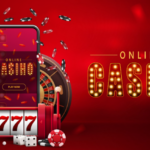Curiosity is one of the most honest parts of human nature. Whether it’s the urge to try something new in intimacy, revisit a fantasy you’ve had for years, or share a hidden part of yourself with someone else, desire is a signal — a message from within about what could bring more connection, pleasure, or excitement into your life.
Yet for many adults, acting on those desires comes with a shadow: guilt. Sometimes it’s a heavy voice from childhood, sometimes it’s cultural conditioning, and sometimes it’s fear of being misunderstood. That guilt doesn’t erase the desire — it just makes it harder to approach it in a healthy, confident way.
The key to guilt-free exploration isn’t to suppress the guilt entirely but to understand it, decide whether it still serves you, and then build a framework that allows you to explore safely and openly. This isn’t about reckless indulgence — it’s about conscious, values-aligned choices that leave you feeling empowered instead of conflicted.
Understanding Where Guilt Comes From

Guilt rarely appears out of nowhere. It’s often tied to early-life conditioning:
- Cultural rules that framed sexuality or sensuality as taboo.
- Religious messages about what is “acceptable” desire.
- Family attitudes toward intimacy that created silence or shame.
- Past relationships where openness about wants was met with judgment.
The first step is not to push guilt away but to examine it. Ask yourself:
- Who taught me to feel guilty about this?
- Does this belief reflect my values now, or someone else’s?
- Is the guilt a healthy warning, or just a habit?
By treating guilt as data — rather than a moral verdict — you can begin to dismantle the unnecessary weight it carries.
Giving Yourself Permission to Want
Once you’ve identified the origins of guilt, the next step is giving yourself permission to acknowledge your desires without judgment. This is the foundation of guilt-free exploration.
Self-permission doesn’t mean acting on everything immediately — it means allowing yourself to be honest about what you want, even if you decide not to pursue it right away. You can start privately: writing your desires in a journal, saying them out loud to yourself, or simply holding them in your mind without pushing them away. Over time, the act of acknowledging your wants begins to replace secrecy with self-acceptance.
Creating a Safe Space for Exploration
Acting on curiosity is far more satisfying when it happens in a safe environment — and safety goes beyond the physical. Emotional and relational safety matter just as much.
For some people, that means exploring with a long-term partner they trust deeply. For others, it means creating clear personal boundaries and stepping into new spaces where consent and respect are non-negotiable. Resources like I Love Excitement can be valuable here, offering a discreet and non-judgmental space to browse ideas, products, and possibilities that encourage curiosity without pressure.

The goal is to ensure that whatever you try happens on your terms — with the right pace, the right people, and the right setting.
Talking About Desires Without Fear
If you share your life with a partner, speaking openly about your desires can be transformative. Many people worry that such honesty will create discomfort, but in practice, it often leads to deeper intimacy.
These conversations work best when approached with empathy and clarity. Instead of hinting or testing the waters indirectly, explain what you’d like to try and why it appeals to you. Invite your partner to share their thoughts, and listen without defensiveness. Sometimes, just knowing that both of you can talk about fantasies without judgment can dissolve a lot of the guilt that’s been holding you back.
Aligning Exploration With Your Values
Exploring desires does not have to mean abandoning your personal ethics or relationship agreements. In fact, guilt often comes from the feeling that you’re betraying yourself — so the more you stay aligned with your values, the less guilt you’ll carry.
This might mean setting clear boundaries, choosing experiences that match your emotional comfort level, or being selective about who you share those experiences with. When your actions reflect your own integrity, you’re far more likely to feel pride instead of shame afterward.
Moving From Fantasy to Intentional Action

There’s a difference between letting fantasy guide you blindly and consciously deciding to bring certain desires into reality. Rushing into something without thought can create more guilt than it removes. Instead, approach exploration as a process:
First, imagine what you want in detail and consider how it might feel in real life. Then, think about any potential consequences — emotional, relational, or physical. Finally, decide whether you’re ready now, need to prepare more, or simply want to keep it as a fantasy for the moment.
When action is intentional, it becomes an empowering choice rather than an impulsive reaction.
Emotional Safety as the Real Confidence Builder
People often focus on physical precautions, but emotional safety is what makes an experience feel truly right. Emotional safety means knowing you can speak up at any point, that your boundaries will be honored without negotiation, and that you can walk away if you choose — without fear of judgment.
When you have that level of security, it’s easier to relax, be present, and fully enjoy what’s happening. Guilt fades when you know you’re in control of your experience.
Bringing New Experiences Into Everyday Life
The most successful explorations are those that fit naturally into your life. If something feels destabilizing, it may be a sign to slow down or rethink the approach. On the other hand, when an experience leaves you feeling energized, confident, and connected — to yourself or your partner — it becomes part of your life in a positive way.
Reflection plays a key role here. After trying something new, ask yourself:
- Did this feel like an authentic expression of my desires?
- Did it align with my boundaries and values?
- Would I want to repeat it, or was once enough?
These reflections help you refine your path forward, making each new step more intentional than the last.







